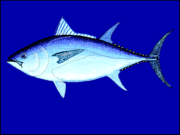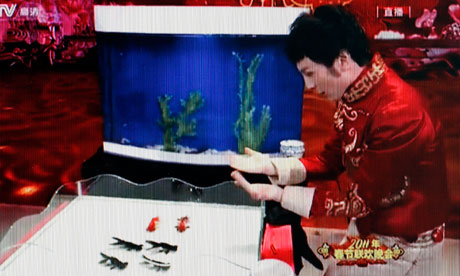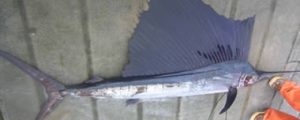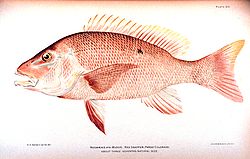Category Archives: Fish
Another case of animal cruelty against goldfish at a Chinese Gala
Yet another Chinese event is by many considered to be tainted with animal cruelty, and just as with the olympics, the unlucky animals are goldfish. at the opening gala of China’s lunar new year festival earlier this month they shower goldfish swimming in perfect military formations. The show put on by magician Fu Yandong was well received by the audience but have sparked outcry in animal activist circles as the only explanation to the trick according to them is magnets in the stomachs of the goldfish. The goldfish in in another word not so much swimming as being dragged. There are many factors supporting this hypothesis including the very shallow water the goldfish is swimming in. The shallow water would allow magnets to work which wouldn´t be possible in deeper water. Experts in the field agrees and think the fish might have been fed food with metal shavings on it.
Fu has denied the accusation of animal cruelty, telling one news programme: “If I used magnets, the fish would stick together.” This is not necessarily true and a magician never reveal his trick even if discovered right?
Another theory that has been put forward is that it is fake fish but experts reject this idea in unison as the replicas would not meet the scrutiny of 100s of million of viewers.
A coalition of 53 groups sent a letter to Chinese broadcaster CCTV asking them to prevent magician Fu Yandong performing it again at the closing ceremony.
Fish taxidermy & Catch and Release
When the practice of catch and release was introduced, a lot of anglers were upset. How can you preserve your memorable trophy catches if you aren’t allowed to bring it home? Today, the trend has shifted – a lot of sport fishers love catch and release since it has boosted fish populations and allowed more anglers to catch larger specimens. Also, the conundrum about how to mount a released fish has been solved, thanks to modern fish taxidermy.
Today, there is no need to bring your fish to the taxidermist to have it mounted. Instead, you contact one of the many fish taxidermists that specializes in fish replicas and provide them with as much details as possible about your catch, e.g. species, sex, length and weight. If you have a photograph of the fish, this will also be helpful.
The fish taxidermist will take that information and use it to create a lifelike fish replica, typically from fiber glass. The replica will then be painstakingly painted to look as much as your catch as possible. If you hire a highly skilled fish taxidermist, a replica like this can actually be even more lifelike than the stuffed skin of a dead fish can ever hope to achieve.
To get a fish preserved has always been expensive. With the advent of modern fish replicas, a new option has become available for anglers on a budget. Instead of having a replica crafted and painted to look exactly like your catch, you can send in details about size and species and get a high-quality ready-made fish replica as a tribute to your trophy catch. This is much less expensive, and if you order from a top-notch producer you will get a replica that really looks like a living specimen of that particular species.
Fish taxidermy has also become greener during recent years when it comes to the actual preservation process. The greenest alternative is of course to go for a fish replica since that requires not preservation at all, but if you really want to have an actual fish stuffed and mounted it is today possible to find fish taxidermists that will carry out the process using a minimum of toxins. Earlier, being a taxidermist was quite a dangerous occupation since a lot of toxic compounds were used to ward off decay, such as the infamous arsenic soap. Arsenic is highly toxic and can be fatal, even in small amounts. Doses too small to cause acute symptoms can still lead to long-term problems such as cancer. The tannins used to preserve the color of the skins were also frequently dangerous, for the tanner as well as for the environment. Even though the taxidermy field has a long way to go yet, significant improvements have been achieved during the last few decades, especially in countries were more stringent occupational and environmental laws have been enacted.
Fake seagrass help us learn how to save dwindling fish populations
A large amount of New Zealand’s seagrass have been killed by sediments released from land development. The seagrass bed at Whangarei Harbour has for instance been reduced from 14 sq km in the 1960s to virtually non-existant today. And sedimentation this is not a new problem – between 1959 and 1966 Tauranga Harbour lost 90 per cent of its seagrass.
Researchers at New Zealands’s National Institute of Water & Atmospheric Research are now fitting the floor of the Whangapoua Estuary with plastic seagrass in an attempt to show how New Zealand’s fish stocks could be boosted by restoring the seagrass habitats. The “seagrass” consists of plastic fronds attached to wire frames, and the length of the fronds varies from 5 cm to 30 cm.
“We made them with tantalising long blades of artificial grass, the things fish really go for,” says NIWA fisheries ecologist Dr Mark Morrison. “What we found, initially, is that fish are really looking for shelter and seagrasses provide good protection to fish.”
The largest density of fish could be found where the density of seagrass was also at its largest.
Fish is now being tagged to make it possible for the researchers to track both growth rate and survival rate.
¨Lice-eating wrasse reduces environmental impact of salmon farming in Norway
When salmon is farmed in large-scale monocultures, the fish tend to become susceptible to disease and parasites. Researchers working for the organization Nofima have now found a way of combating the parasite salmon lice in fish farms without using any dangerous toxins. Wrasse loves to eat lice, so the researchers simply added wrasse to the salmon populations and the result was astonishing.
During the trials, the most efficient lice eater turned out to be the Ballan wrasse (Labrus bergylta). In addition to being highly efficient, it also gathered lice at lower temperatures than the other Wrasse species that took part in the experiment.
When Ballan wrasse was used, roughly 2-5% wrasse was needed for salmon living in sea cages. This means that a population of 100 000 salmon will need somewhere between 2 000 and 5 000 wrasse to stay deloused. A new larger project will now be prepared to make sure there is an adequate supply of the lice eaters in Norway. The project will go on for three years and has received funding from The Fishery and Aquaculture Industry Research Fund (FHF).
The effort which is now commencing is unique in both a Norwegian and global context. Norway is the only salmon-producing country that is using wrasse on a large scale to combat salmon lice,” says Arne Karlsen, managing director of FHF.
Removing large amounts of Ballan wrasse from the wild to keep in salmon farms could cause serious damage to the wild populations and the goal of the Norwegian project is therefore to cover at least 25% of the demand with farmed wrasse by 2013.
In addition to Nofima and FHF, the project will also involve SINTEF Fisheries and Aquaculture, the Institute of Marine Research and the Norwegian University of Science and Technology.
Several Norwegian projects are already taking a closer look at the Ballan wrasse, including a research venture concerning Ballan wrasse farming that started last year with funding totaling NOK 12 million from the Research Council of Norway, FHF and industry partners.
” It is estimated that the total Norwegian effort on Ballan wrasse farming is in the vicinity of NOK 100 million,” says Kjell Maroni, research and development director at FHF
The researchers will now have to find out how to carry out large-scale wrasse farming without being plagued by the same problems with disease and parasites as the salmon farms.
Top Ten Fish Stories of 2010
A turbulent, bizarre and downright strange year for fish, our list of the Top Ten Fish Stories of 2010 will have you scratching your head, wiping away tears and laughing all in one sitting. To hold you over until 2011, we put together the wildest and most comprehensive list of fish stories. So sit back, and enjoy the ride.
Top Ten Fish Stories of 2010
- Nothing affected fish more strongly in 2010 than the BP Gulf Oil Spill . Going down in history as the worst man-made ecological disaster in antiquity, the repercussions of this tragedy are truly stunning. According to the official report released January 1, 2011 by the National Commission on the BP Deepwater Horizon Oil Spill and Offshore Drilling, “Organisms are exposed to oil through ingestion, filtration, inhalation, absorption, and fouling.” With ecological and economical losses proving difficult to pinpoint exactly, 2010 will nonetheless go down in the fish-histories as a time of great doom, death and terrible loss.
- Making a strong statement for endangered and extinct species the world over, the Lake Saiko salmon reemerged from the pages of history in 2010. Thought to be extinct for over half a century, the “kunimasu” or “black kokanee” salmon materialized from the murky beyond, laying testament to the true adaptability of this remarkable species. Like the infamous snail darter fish of the Tellico Dam controversy, the black kokanee baffled researchers and proved once again that life always finds a way. Look also to salmon in Alaska and Derbyshire England for inspiration – both species experiencing respective rebounds in 2010. We’ll have to get one of these guys in an aquarium , just in case they try to run off on us again!
- In 2010, high-fiving a fish became possible for the first time with the discovery of a mysterious “pink handfish” off the Australian island of Tasmania. Walking with its fins rather than swimming, this fish marks an exciting chapter in the voluminous and burgeoning book of “unknowns” discovered in the world’s oceans to date. Indeed, on the weird-o-meter, this fish gives the angler fish (with its spooky, head-dangling light bulb) a run for its money.
- The Bluefin Tuna has been in the news at every turn in 2010. Between the BP oil spill and over-fishing sparking controversy in the EU, this species of fish should be on every fish-aficionados mind.
- Although mammals, dolphins made a statement in 2010 that spoke volumes about the difference between mammalian brains and those of fish. In the wake of the BP oil spill, unlike sea turtles or fish, dolphins showed their smarts by swimming away from deadly oil plumes. What does this tell us about fish? Simply put, fish need more help in a human dominated world, which should in good conscience influence policy-making in the coming years.
- Try squeezing one of these suckers into a fish tank and you might have the makings of a freak show on your hands! One of 38 species discovered around Greenland since 1992, the “longhead dreamer” anglerfish came seemingly screaming off the pages of your favorite science fiction novel in 2010 to send chills up the spines of people worldwide. Not only does this fish look like a monster found on a 14th Century sea map, it illustrates the vastness of the true “final frontier” – the Earth’s mysterious and largely unexplored oceans. Knowing more about the surface of the moon than about our own oceans, this species has shown mankind that we have only scraped the surface on what lies beneath the briny beyond. So Bigfoot, move aside! There are countless species yet to be discovered beneath the world’s waves.
- Calling to mind the archetypal image of a mad scientist bringing a new species to life —“It’s Alive! It’s Alive”—“Transgenic salmon ” made their real debut in 2010 as mankind’s most recent installment in a long line of playing god. Modified by scientists for human consumption, what was once an Atlantic salmon has been spliced with the DNA of two other fish species to create a hybrid that reaches full size in just half the time of a regular salmon. One has to wonder, is this exciting, or just plain scary?
- Mankind’s interest in missing links led to the repeal of longstanding Darwinian Theory pertaining to a species of hybrid that formerly spanned the gap between tetrapods and fish. A Tiktaalik fossil that was once accepted as the missing link between fish and tetrapods was recently supplanted for an even older fossil discovered in Poland of tetrapod tracks that tell quite a different story. This new evidence has effectively set scientists back to their laboratories, searching for the true missing link between fish and tetrapods.
- People are finding new and surprisingly simple solutions to battle invasive fish species in the Florida Keys. A rising star in the invasive fish ranks, the lionfish has overtaken the warm, pristine waters of the Florida Keys in 2010. In the words of the Associated Press, people in the Keys are taking the tact, “If you can’t beat them, eat them,” with the Reef Environmental Education Foundation most notably releasing “The Lionfish Cookbook.” Now, if we could only find a way to make the zebra mussel or lamprey eel appetizing, we would really be in business.
- Just when you thought things couldn’t get any stranger, enter the infamous Snakehead fish of Australia. Sure, we’ve all seen scary looking fish before, but before now, we only worried about them in the water. That’s right, this invasive species, known to inhabit Oceania, is worried to make landfall in Australia if action isn’t taken to curb the spread of this strange beast. So what makes this species so strange? It’s a fish that can breathe air and hunt on land. Enough said.
Guest post by: FishTankWarehouse.com
“Extinct” Salmon Species Discovered in Lake Saiko
A researcher has commented that this past Wednesday his team has discovered that a local freshwater salmon species classified as extinct by the government about seven decades ago, still lives on in Lake Saiko.
Tetsuji Nakabo, Kyoto University professor, commented that he took a look at nine fish from the lake and discovered that they were strikingly similar – in fact the same as – the “kunimasu” or “black kokanee” species of salmon.
If this find is confirmed, it will be the very first time a fish species in Japan which has been classified as extinct has been found living still, the Environment Ministry explained. The ministry has commented it is going to do its best to verify the claims of Nakabo and review its classification of the salmon.
The salmon, a landlocked sockeye, had been seen earlier on only in Lake Tazwa, and was believed to have died off due to an inflow of toxic water sometime in the 1940’s.
However, Nakabo explained there are records which show the salmon’s eggs were taken to other lakes, including Lake Saiko and Lake Biwa, to help improve stocks about half a decade earlier than when they supposedly went extinct.
The species “likely propagated from the eggs from that time,” Nakabo explained.
This discovery came in February, after Nakabo asked fish expert Sakana-kun to show a likeness of the extinct fish.
Sakana-kun requested samples of “himemasu” – a fish similar to that of the “kunimasu” – and discovered they were very similar, and just possibly the same!
COD War II: Collapsing Fishing Quotas Dragging Britain and Iceland in Trade Battle!
Minister for Natural Environment Fisheries, Richard Benyon, has cautioned that the sustainability of mackerel in the future is at risk.
This calamity is already being called “Cod Wars II”.
The EU and Britain are on the brink of a serious trade battle with Iceland and the Faroe Islands after discussions about changing fishing quotas failed miserably.
Faroes and Iceland have both increased their fishing quotas substantially, and have basically up and walked out of discussions with the EU, which were supposed to find a middle ground agreeable to all concerned.
The other nations of the EU – including Britain, much to everyone’s surprise – are looking to take some extreme actions which might just force Iceland and the Faroes to limit the amount of mackerel they reel in.
There has already been talk of trade sanctions which would effectively ban the import of mackerel.
This is very much like the Cod Wars of the 50’s and 70’s, when Britain and Iceland were fighting over the rights to fish in the North Atlantic.
It got so serious that even the Royal navy was called in to put a stop to boats from Iceland who were getting in the way of the British trawlers.
But something needs to be done.. Both Iceland and the Faroes have given themselves quotas which are way larger than five years ago. So… There may be sanctions, or there may be interference with boats and fishing operations, whatever is going to happen, “Cod War II” promises to be very interesting indeed.
“Dog Salmon” Being Pushed Heavily in British Supermarkets as Christmas Meal

The sudden appearance of “chum salmon” has really shocked shoppers.
You see, farmed salmon – primarily Scottish in origin in years past – has gotten quite pricey, and the chum is the cheaper alternative, being twenty to thirty percent more economical.
A traditional salmon side of 600 grams may run you 10 GBP to 12 GBP, however this “dog salmon” retails for around 5 GBP.
However, it is not just this “dog salmon” which has been hitting the shelves. Many retailers are also opting for foreign bred geese as well, which has the National Farmers’ Union in an uproar.
“There is concern about how much food is coming in from overseas for Christmas – particularly when it’s dressed up as a traditional product and can quite easily be misleading,” fumed head of the NFU’s food chain unit, Lee Woodger.
“British farmers pride themselves on the quality of the food they produce, both in terms of the environmental and welfare standards, and traceability.
“Consumers can only get a 100 per cent guarantee on where food is farmed, produced and packaged if they see the tractor logo with a Union Jack on the packaging.”
That being said, the cheaper alternatives are sure to be the norm this Christmas, what with the current economic crisis the world over.
Japan Aquarium Features Electric Eel Powered Christmas Tree
Much to the amazement of visitors, an aquarium in Japan is making some shocking changes to the way we view Christmas ornaments – they have plugged in an electric eel to power the lights on their Christmas tree.
Every time the eel makes a move, two aluminum panels take in enough power to light up the two meter tall tree, which is covered in white, and provides an amazing pattern of glowing lights.
The aquarium has actually been using the eel to help promote ecological sensitivity in visitors for the past half decade.
This year, they have raised the bar a bit, and even added a robot Santa which sings and dances when visitors jump on a pad.
“We first decided to get an electric eel to light up a Christmas tree and its top ornament using its electricity,” said a representative on the public relations team for the Enoshima Aquarium, Kazuhiko Minawa. “As electric eels use their muscles when generating a charge, we also thought to get humans to use their muscles to light up parts of the tree and power Santa.”
Sumie Chiba, a frequent visitor to the aquarium – located just to the south of Tokyo –, was rather intrigued by the display, however she was not at all convinced of the practicality of using electric eels to power normal, everyday, appliances in the home. “If this was possible, I think it’s very nice and extremely eco-friendly,” she commented.
“Bad Start” as EU Says Nay to Proposed Quotas in Summit To Save Bluefin Tuna

This “Nay”, which was given this past Wednesday, means that the 27-nation EU will join in the international quota discussions in Paris this week. This discussion will center around harsher methods to help save the fish, whose numbers have been declining exponentially over the past four decades.
The EU is seen as one of the best in the world when it comes to Atlantic bluefin. These bluefin can grow as big as a horse, swim faster than a sports car, and can be hawked at markets in Japan for a whopping $100,000.
The bluefin quota for this past year was 13,500 tonnes and Damaki has commented that in order to help the bluefin get back on their feet, that the quota should be reduced to 6,000 tonnes for 2011. This was suggested last month at the ICCAT – International Commission for Conservation of Atlantic Tunas. The ICCAT discussions, due to last ten days, began this past Wednesday.
Ms. Damanaki granted that in order for fishermen to maintain their livelihoods that the quota would need to be more than 6,000 tonnes. However, in a meeting this past Wednesday, the EU ambassadors to Brussels, which were led by France, squawked at the notion and submitted one of their own, which doesn’t even take into consideration any quota reductions.
“Nevertheless, the Commission will respect its obligations as the negotiator on behalf of the European Union,” Ms. Damanaki responded somewhat tersely.
Conservationists have accused France of not being green enough – see the fact that they parked a giant tuna in front of their commission offices.
“It’s a bad start,” commented an adviser to the U.S.-based Pew Environment Group, Remi Parmentier. “Here we have a real test-case of the EU putting words into action for reforming fisheries.”




